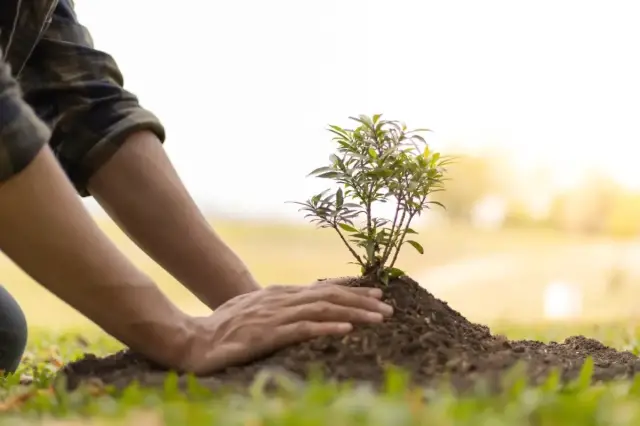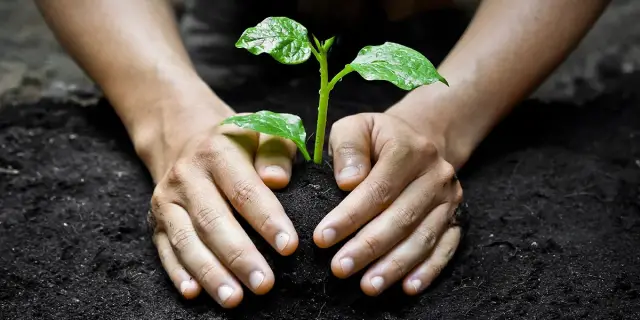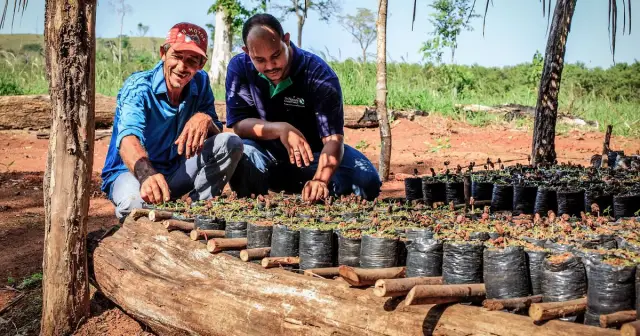World Tree Day is celebrated every April 29th in Colombia and represents a key date for raising awareness about the crucial role trees play in the planet's sustainability. This commemoration, promoted by both government agencies and civil and educational entities, seeks to foster a culture of respect and care for the environment, from the youngest to the oldest.
During this day, activities are organized throughout the country: mass plantings, school workshops, digital campaigns, and ecological tours. Each of these actions aims to raise collective awareness about the urgent need to protect our forests, halt deforestation, and restore ecosystems that have been degraded by human activities or natural phenomena.
Why is Arbor Day Celebrated?
A global call for conservation
The celebration of Arbor Day was born in response to growing concerns about environmental degradation and forest loss worldwide. This date, which varies by country, promotes a culture of conservation where trees are recognized for their indispensable contribution to life.
Trees purify the air, capture carbon dioxide, provide shade, help regulate the climate, control soil erosion, and are a source of food and shelter for a variety of species. They also have emotional and symbolic value, as many people consider them sacred or representative of life. This global day allows people to reconnect with their natural environment and appreciate the role forest ecosystems play in our lives.

How Arbor Day is Commemorated in Colombia
1. Reforestation Campaigns
One of the most visible and effective initiatives in Colombia is the reforestation campaigns organized throughout the country. These campaigns, led by environmental authorities, private companies, and ecological foundations, focus on planting native species adapted to each region, such as the Andean oak, the ceiba, the yarumo, and the guayacán.
The planting days not only aim to increase the country's vegetation cover but also to actively involve communities, especially youth and children, in caring for nature. These activities are a form of practical education, where participants learn about the life cycle of trees, their ecological importance, and how to contribute to their preservation.
Example:
In 2024, Bogotá planted more than 5,000 trees in high-impact urban areas, such as the town of Suba, contributing to the restoration of ecological corridors and the beautification of public spaces.
2. Educational Activities
Environmental education is another fundamental focus of this celebration. Educational institutions at all levels organize events such as talks, drawing contests, school projects, environmental fairs, documentaries, and field trips. These activities allow students to understand the country's environmental challenges and develop a sense of ecological responsibility from an early age.
In addition, the creation of school gardens and community nurseries is encouraged, where students not only learn to plant, but also to care for and monitor the growth of their plants. This connection to the land has a direct impact on their perception of the environment and their future commitment to its protection.
💡 Tip: The Ministry of Environment offers free teaching materials for teachers, tailored to different regions and educational levels, with a focus on biodiversity and sustainability.
3. Cultural and Community Events
In many regions of Colombia, especially in rural areas and indigenous communities, Arbor Day is also celebrated through cultural events. Traditional dances, rituals of gratitude to the earth, songs, and poems dedicated to trees are part of these festivities, which reflect the profound connection between nature and culture.
These types of celebrations promote a holistic view of the environment, recognizing not only its ecological value but also its spiritual, historical, and social value. They are moments of community unity, where social ties are strengthened through shared respect for the natural environment.
4. Adopt a Tree
Campaigns like "Adopt a Tree" allow any citizen to actively contribute to the country's reforestation. Through donations, volunteering, or monitoring programs, it's possible to nurture a tree's development from planting to adulthood.
These initiatives are promoted by organizations like Fundación Natura, which works in strategic territories such as the Amazon, Chocó, and the Colombian Andes. Adopting a tree not only helps the environment, it also strengthens the sense of belonging and commitment to the country's natural resources.

The Importance of Trees in Colombia
Colombia, a megadiverse country
Colombia is the second most biodiverse country in the world and boasts more than 7,000 tree species, many of them endemic. This wealth is distributed across its multiple ecosystems: tropical rainforests, moorlands, humid forests, savannas, and mangroves. Protecting trees in Colombia is not only an ecological issue, but also a national priority in terms of sustainability and development.
The country faces major threats such as illegal deforestation, forest fires, agricultural expansion, and mining. Therefore, every tree planted is a step toward restoring and protecting our precious ecosystems.
What Can You Do?
Participating in the Arbor Day celebration doesn't require a lot of resources. Any action counts, from planting a seed at home to organizing a talk in your community. Here are some ideas:
Participate in a local planting campaign.
Donate to an NGO working on forest restoration.
Share educational content on your social networks.
Take care of the trees that already exist in your neighborhood.
Educate your children about the value of forests.
Small personal changes can have a large collective impact if replicated on a large scale.

Frequently Asked Questions about Arbor Day in Colombia
When is World Tree Day celebrated in Colombia?
It is commemorated on April 29 , a date adopted by the country to promote environmental education and reforestation campaigns throughout the country.
What is the national tree of Colombia?
The Quindío wax palm , recognized as the national tree, is a species endemic to the Andes and is protected by law due to its ecological and cultural importance.
Can trees be planted in the city?
Yes, many Colombian cities have municipal programs that support urban tree planting, especially in parks, avenues, and school green areas.
How to know which tree to plant?
Ideally, you should plant species native to the region, as they are adapted to the climate and soil. You can consult with your local environmental agency or a specialized nursery.
Where can I find out about Arbor Day events?
On the social media channels of your mayor's office, governor's office, or the Ministry of the Environment. Also on the websites of environmental NGOs such as WWF Colombia and Fundación Natura.
Get inspired and plant life
World Tree Day in Colombia is more than just a holiday: it's a reminder of our shared responsibility to the Earth. It's the perfect opportunity to take action, engage our children, inspire our neighbors, and contribute to the restoration of the ecosystems that provide us with clean air, water, shade, and life.
Make a difference today: plant a tree, care for a forest, protect the future.
